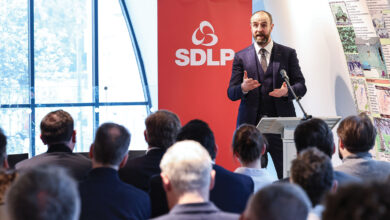Evolving voting systems for the modern MLA

A report by Northern Ireland Assembly’s Information and Research Service on electronic voting, as well as the introduction of proxy voting, are posing the most fundamental of questions: How can we modernise the role of the MLA?
In October 2024, the Assembly’s Committee on Procedures published its first report of the mandate, focused solely on introducing proxy voting for MLAs taking parental leave during plenary sessions. The proposal, now embedded in Standing Order 27A, allows an MLA on parental leave – including maternity, paternity, adoption, shared parental leave, or in cases of pregnancy complications – to designate another MLA to vote on their behalf in the chamber.
Although narrow in scope, the reform is both symbolically and practically important. It recognises that MLAs are not immune from the realities of parenthood and need modern systems to support temporary absences especially when, unlike employees, they are not entitled to statutory parental leave.
Proxy voting, the report says, ensures continuity in political representation and upholds the legitimacy of democratic outcomes, all while promoting transparency. Votes cast by proxy will be recorded in the official report and minutes of proceedings, ending the ambiguity that arises when an MLA is absent without explanation.
Broadly, there is a message which can be drawn on modernising politics in line with the needs of society: representative democracy must evolve to reflect the lives and expectations of the people it serves. In this context, it is a clear effort to address the imbalance that often sees politics remain structurally unfriendly to family life, particularly for women.
The proxy voting reform is significant but there is more modernising which can take place.
The case for electronic voting
In an age where most industries are embracing digital innovation, the current system in Stormont – where MLAs physically walk through lobbies to vote – is undoubtedly archaic.
The Covid-19 pandemic demonstrated that digital transformation is not only possible but necessary in times of crisis. However, despite temporary standing orders for proxy voting during the pandemic, the Assembly has not implemented electronic voting, even within the chamber.
Electronic voting could vastly improve the efficiency, transparency, and accessibility of Assembly proceedings.

Lessons from other parliaments
The Canadian House of Commons, for example, now offers a permanent hybrid model where MPs can vote using a secure app from anywhere in Canada.
Introduced during the pandemic and refined through months of consultation and testing, the system incorporates facial recognition technology, a 10-minute voting window, and multilingual support available in both French and English.
It has helped reduce voting times from up to 45 minutes to between 10 and 12 minutes on average, improved participation levels – especially for those balancing constituency work, travel, or personal circumstances.
Closer to home, the Scottish Parliament has used electronic voting since its inception in 1999. MSPs vote using touchscreen panels on their desks, with results visible instantly. Remote voting was introduced during Covid-19 and has now been permanently enabled through changes in standing orders.
The Senedd Cymru/Welsh Parliament similarly operates a fully digital voting system and has adopted hybrid proceedings with provisions for remote voting via a secure platform. Voting is logged and published alongside plenary records, ensuring public accountability.
Dáil Éireann – while restricted by constitutional requirements for physical presence – has invested in strengthening the integrity of in-person electronic voting after past controversies, including installing additional cameras to provide an auditable trail.
These examples offer not only technical templates but also show how parliamentary institutions can prioritise flexibility without compromising security, participation, or transparency.





